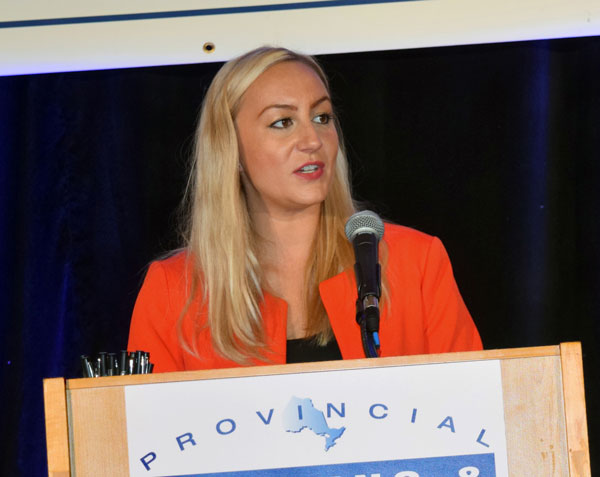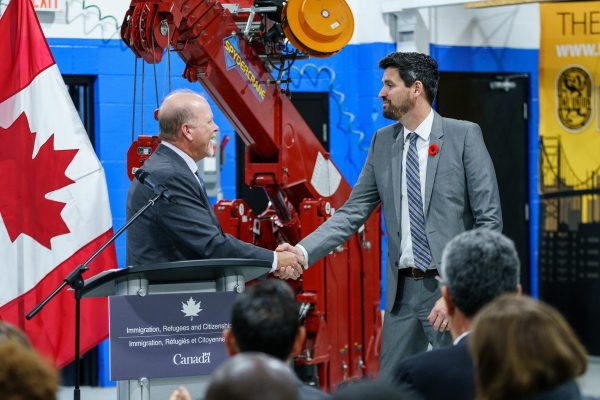National construction stakeholders suggest 2022 was the year that workforce availability transformed from a concern to a crisis, making the issue the consensus number one news story for the year.
The ramifications of the problem are vast, construction executives said, with the construction investment climate suffering, owners making new demands of contractors to produce labour plans and a policy scramble on many fronts including recruitment, immigration and tax reform.
“We’ve moved from a shortage to a crisis, not only for Canada’s economy but for the construction industry,” said Mary Van Buren, president of the Canadian Construction Association (CCA). “We had about 93,000 open jobs and that was as of September, October.”
The industry has been talking about the problem for years and there have been aggressive efforts to attract women, Indigenous and new Canadians and revisit policy on Temporary Foreign Workers and immigration streams, Van Buren noted.
“But obviously it’s not enough,” she said. “It’s essential for us to keep building, to maintain the benefits that Canadians get from not just Canada’s competitiveness and jobs, but the quality of life that we want and expect.”
Paul de Jong, president of the Progressive Contractors Association of Canada, said every one of his member firms reports they cannot find enough workers.
“Not only is that a frustration in terms of the practicality of it all, it actually becomes a serious problem in respect to the investment climate because a project owner will engage with a contractor to do a project and ask for a labour plan, and if the contractor is not able to furnish an airtight labour plan, the contractor may suffer a delay of scope of work,” he said.

While a project is set aside, the owner will take stock of other pressures such as supply chain delays, rising costs and interest rate hikes and might decide to pursue the project elsewhere or continue the delay indefinitely, de Jong said.
Ken Lancastle, COO of the Mechanical Contractors Association of Canada, reiterated the workforce problem has been a long time coming but the way it’s manifested has been a surprise in that it’s more severe given that both public and private sectors are spending so much on projects, and the work has been spread across the country so there has been less labour mobility.
“We had that perfect storm that really did expose the issue and perhaps a little more than it may have because there weren’t as many tangible solutions available to the industry,” he said.
Looking at solutions, Lancastle identified immigration, reaching out to underrepresented groups and promotion of construction to a broader cohort including their parents as industry-wide initiatives that must continue. From the point of view of mechanical contractors, the sector has to fine-tune its analysis of future streams of projects and then ensure there is precision in the trades being trained.
“We know the important role the mechanical systems are going to play to ensure the building stock can achieve net-zero,” Lancastle said as an example.
“So there needs to be greater promotion and allocation of resources and training to those trades so that mechanical contractors across the country have access to skilled trades people so that we can deliver on those projects.”
Van Buren said the CCA’s Hill Day, when members reach out to parliamentarians, featured over 60 conversations in which the message was pressed that reforms to immigration will help the construction sector address its workforce crunch. De Jong stressed the importance of immigration reform as well as the need for a significant overhaul to the trades training process, including in the high school years, as potential workforce solutions.

Canada’s Building Trades Unions (CBTU) executive director Sean Strickland identified two federal policy reforms announced in 2022 as important to his sector. Changes to the Express Entry System announced by Minister of Immigration Sean Fraser to specifically include heavy equipment operators along with other occupations set a good tone for future discussions with the ministry, Strickland said. The CBTU has been asked by Fraser to identify specific trades needed in different regions.
The other key reform for the CBTU was the inclusion of the skilled trades workforce mobility tax deduction in the 2022 budget. It remedies an inequity in the tax system where construction workers were ineligible to deduct travel and accommodation expenses if they travelled to take on work.
“The example I use is the worker in Windsor or London who has to travel to Toronto for work. Having that deduction is really a difference maker,” Strickland said.
In the view of Association of Consulting Engineering Companies – Canada president and CEO John Gamble, the big story for engineering firms was the continuing evolution of workplaces post-COVID.
Firms are willing to change the way they do business, to modernize, to better utilize talent, to deliver projects differently, to create workspaces that function better, to manage and operate their firms in new ways, he said, but there is still uncertainty where it will all settle.

“We’re using technology to remain agile,” said Gamble. “I think it’s a credit to not just our sector but across the economy, how so many businesses were able to keep the lights on and keep producing.”
The wholesale reforms are still a work in progress, said Gamble.
“We’re going to see cycles. I don’t think we’re ready to do a victory lap.”
Gamble believes engineering firms are going to use this cycle of reinvention to distinguish themselves.
“If firms are prepared to have constructive discussions with their employees, if they’re prepared to think outside the box, I think there’s some pretty exciting opportunities.”
Follow the author on Twitter @DonWall_DCN.











I am a 30 year Veteran with access to over $92,000 under the VAC Education and Training Benefit (ETB) and have NEVER been contacted by the Federal Minister of Industry & Innovation, the PMJT, the VAC Minister regarding any training for a Green Industry in Canada.